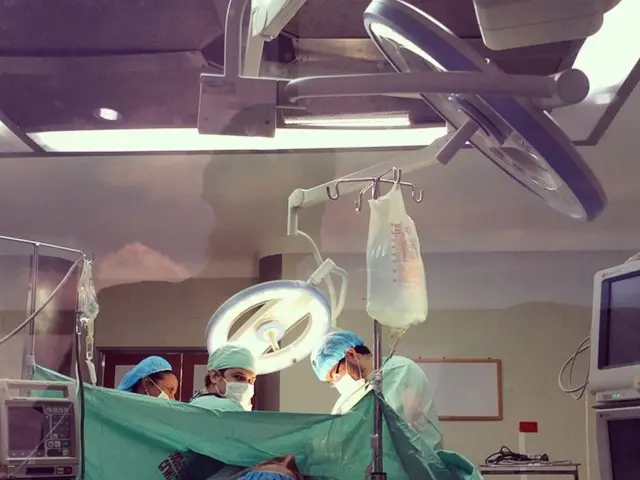Scientists at Scripps Institution receive approximately $5 million for investigating causes of harmful, toxic algal blooms that can be lethal.
A groundbreaking research project, funded by the National Oceanic and Atmospheric Administration (NOAA), is set to shed light on the causes of deadly oceanic algal blooms. Led by Bradley Moore, a professor at Scripps, the initiative is part of NOAA's Ecology and Oceanography of Harmful Algal Blooms (ECOHAB) program, and aims to develop improved ecological forecasts of harmful algal blooms (HABs).
The geographic scope of the project includes coastal waters from Monterey Bay to Santa Barbara to Del Mar. The research team, comprising genomics experts, biological and physical oceanographers, and engineers from Scripps Oceanography, Monterey Bay Aquarium Research Institute, and the Southern California Coastal Water Research Project, will deploy semi-permanent instruments called Wirewalkers in the ocean to collect data on the physical environment where algal blooms occur.
The team's focus is on the diatom Pseudo-nitzschia, which produces the toxin domoic acid. This toxin can cause memory loss, seizures, and death in larger mammals, including humans. In 2015, a toxic algae bloom caused significant damage to the U.S. western coastal economy. The underlying factors that cause the diatom to produce the toxin are not yet understood.
To address this, the team will sequence the genome of Pseudo-nitzschia strains to better understand the diversity and distribution of domoic acid-related genes. They will also sample deeper water to detect subtle changes in gene expression that are at the heart of the harmful algal bloom mystery.
Moreover, the team will conduct month-long sea expeditions to search for harmful algal blooms in the fall and spring. Clarissa Anderson, a biological oceanographer, believes that underwater robots will help detect and follow subsurface algal blooms. Scripps Oceanography researchers have discovered the genetic basis of domoic acid production in toxic algal blooms, and will conduct laboratory experiments to understand cellular and physiological triggers for its production.
Maggie Broadwater from the NOAA ECOHAB Research Program expects that predictions of bloom toxicity will be vastly improved, leading to earlier and more accurate warnings. The $4.9 million grant from NOAA will fund this research, which is of great interest to NOAA as it seeks to better predict and manage harmful algal blooms.
The hope is that this research will uncover a "lag" or a period to predict a bloom, thus enabling authorities to take proactive measures to protect marine life, wildlife, and human health.
[1] NOAA. (n.d.). Ecology and Oceanography of Harmful Algal Blooms (ECOHAB). Retrieved from https://www.ecohab.noaa.gov/ [2] NOAA. (n.d.). Harmful Algal Blooms (HABs). Retrieved from https://www.harmfulalgalbloom.noaa.gov/
Additional Information
- Monterey Bay Aquarium Research Institute will provide a torpedo-like, long-range autonomous underwater vehicle to collect samples from algal blooms off the coast of California.
- The team will test near a variety of wastewater discharge hotspots along Orange County to explore the hypothesis that water pollution could contribute to toxic algal blooms.
- This oceanographic research project, funded by the National Oceanic and Atmospheric Administration (NOAA), is collaborating with Monterey Bay Aquarium Research Institute, aiming to use a torpedo-like, long-range autonomous underwater vehicle to collect samples from algal blooms off the coast of California.
- As part of this research, the team will test near a variety of wastewater discharge hotspots along Orange County, exploring the hypothesis that water pollution could contribute to the occurrence of toxic algal blooms.
- In alignment with health-and-wellness concerns, the focus of the project is on the diatom Pseudo-nitzschia, which produces the toxin domoic acid, causing serious medical-conditions such as memory loss, seizures, and death in larger mammals, including humans.
- As the research progresses, it is anticipated that improved ecological forecasts of harmful algal blooms (HABs) will lead to advancements in climate-change research, specifically relating to environmental-science aspects influencing oceanic algal blooms and their impact on marine life, wildlife, and human health.




